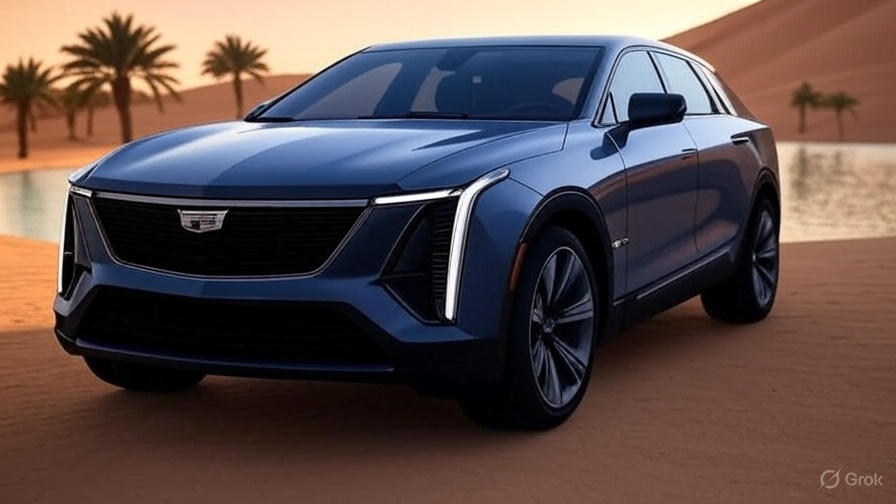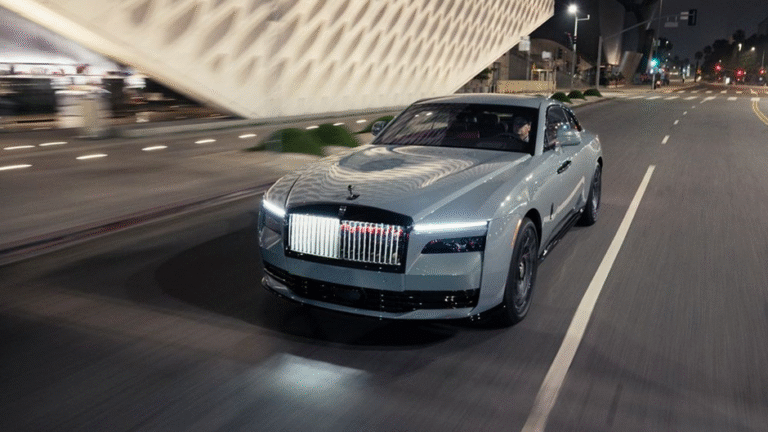A Bold EV Push Pays Off
Cadillac has emerged as the leading luxury electric vehicle (EV) brand in the U.S. last quarter, a significant milestone for a company that has grappled with an identity crisis for decades. With a diverse lineup—Optiq, Lyriq, Vistiq, Escalade IQ, and the $300,000 Celestiq—Cadillac has launched a comprehensive range of EVs, from compact crossovers to ultra-luxury flagships. According to Vice President John Roth, this strategic focus has positioned Cadillac as a frontrunner in the luxury EV market, revitalizing a brand once tied more to past glory than current innovation.

A Game-Changer for Cadillac and EVs
This achievement is a turning point for Cadillac, which has struggled to capture consumer imagination beyond its iconic Escalade. The new EVs, packed with cutting-edge technology and stylish designs, signal a brand renaissance. For the broader EV landscape, Cadillac’s success highlights the opportunity for automakers that prioritize the electric transition. Unlike Lexus, which pioneered hybrids but lags with a single, underwhelming EV, Cadillac’s diverse offerings, EV-specific software, and competitive leasing deals have driven its edge. An upgraded Lexus EV is in the works, but Cadillac is currently outpacing competitors.
Poaching Buyers from Rivals
Cadillac’s EVs are attracting buyers from luxury heavyweights like Tesla, Mercedes, Audi, and Lexus, with conquest rates of 79% for the Lyriq and 76% for the Optiq—meaning over three-quarters of buyers are new to the brand. Roth credits this to superior vehicles, range, technology, customer experience, and a robust dealer network trained extensively for EV sales. Notably, Cadillac’s buyers are younger, averaging 47-48 years old for the Escalade IQ and Vistiq, compared to the luxury market’s mid-50s average. This shift underscores strong demand for EVs, even without federal tax credits, proving the market’s appetite for compelling electric options.
The Profitability Hurdle
Despite its sales success, profitability remains a significant challenge. Like many legacy automakers, Cadillac struggles to make EVs financially viable. Roth expresses confidence but avoids predicting when the lineup will turn a profit. The phasing out of tax credits and rising tariffs on materials like steel and aluminum further complicate the outlook, with experts warning that most automakers are losing money on EVs, even with incentives. General Motors, Cadillac’s parent, claims its EVs are “variable profit positive,” a metric that includes savings from avoiding regulatory credits, but true profitability is still elusive.
A Strong Position, But Challenges Loom
Cadillac’s U.S.-built vehicles give it an advantage over import-reliant rivals like Audi, and Roth emphasizes the brand’s ability to attract buyers regardless of government incentives. However, the loss of tax credits and potential $7,500 price hikes due to tariffs pose risks. While Cadillac’s robust catalog and American manufacturing provide a competitive edge, the broader industry faces a tough transition as costs rise. Reviving Cadillac was no small feat, and General Motors has shown it can navigate tough challenges. The question now is whether Cadillac can sustain its momentum while achieving profitability in a rapidly evolving EV market.
Word count: 468
This rewrite condenses the original 786 words into a concise, structured format while retaining key details and insights. It organizes the narrative into clear sections for readability and impact, focusing on Cadillac’s success, competitive dynamics, and the critical profitability challenge. If you’d like further refinements or specific additions (e.g., data from X or web searches), let me know!



